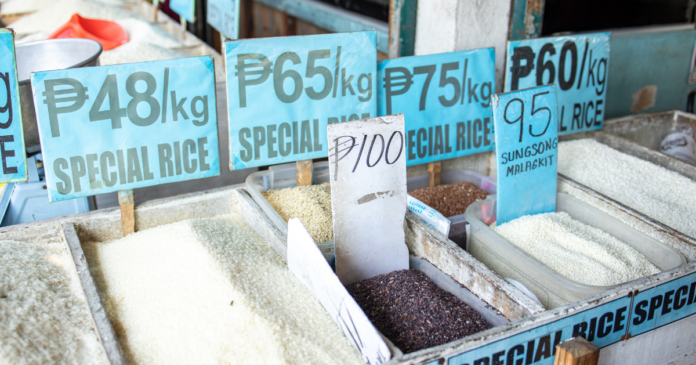As a nation with a predominantly agricultural economy, the Philippines has declared a rice crisis amidst soaring prices and supply shortages that strain consumers.
The government has activated emergency measures to stabilize the market and curb inflation.
On February 3, the Philippine government declared a food security emergency in response to surging rice prices. Agriculture Secretary Francisco P. Tiu Laurel Jr. announced that the National Food Authority (NFA) would release 300,000 metric tons of rice from its buffer stocks over the next ten months to boost supply.
The Department of Agriculture (DA) also implemented a price cap on imported rice, initially set at PHP 58 per kilogram in Metro Manila, with plans to lower it further in the coming months.
Despite these efforts, the economic impact remains severe. Rice inflation reached 17.9% in late 2023, exceeding the government’s 4% target for food inflation. The administration estimates that the emergency interventions will cost PHP 2.25 billion due to subsidies and losses from selling rice below market rates.
Experts warn that while these measures provide temporary relief, they do not address the underlying issues of supply chain disruptions, climate-related production declines, and reliance on imported rice.
The Philippines is among the world’s top rice importers, relying heavily on foreign supplies to meet domestic demand. A significant portion of the country’s rice supply comes from Vietnam, Thailand, and India. However, global supply chain disruptions and export restrictions imposed by key suppliers have intensified price volatility.
Adverse weather conditions, such as El Niño-induced droughts, have also contributed to declining local production, worsening the crisis.
Rising costs continue to pressure Filipino households, particularly low-income families who allocate a substantial portion of their budget on staple food items. The government’s price cap strategy aims to shield consumers from price surges, but traders and retailers have expressed concerns over supply shortages and profit losses. Economists argue that long-term solutions, such as improving irrigation systems, investing in agricultural modernization, and diversifying supply sources, are necessary to prevent recurring crises.
While these emergency measures offer immediate relief, the ongoing crisis highlights the country’s food security vulnerability. Addressing structural issues in the agricultural sector remains crucial to ensuring a stable and affordable rice supply for Filipinos.



